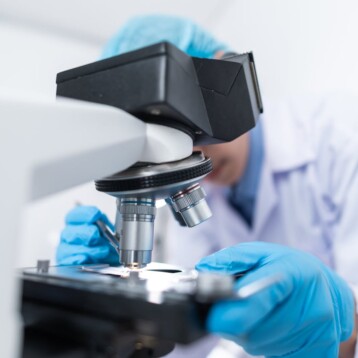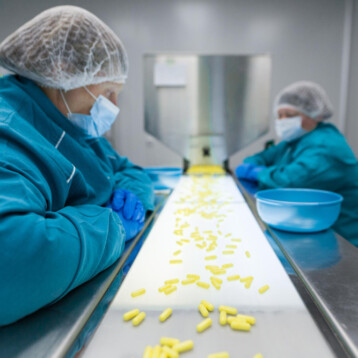|
pH is the measure of the acidity in a solution (and in our bodies). Among other physiological characteristics, different cells in our body differ in their pH, nutrients’ concentration, and expressed enzymes. These differences can help a drug delivery system distinguish between two cells so that a drug is delivered only to a specific set of cells. A cancer cell, for instance, will express different enzymes than the healthy cells surrounding it.
The new nanovalve developed at Northwestern is a drug container that opens and releases the drug at a certain pH level. The valve is composed of a honey-comb shaped tiny enclosure, covered by another molecule. The cover is attached to the honey-comb structure by electrostatic force, creating a closed complex. At neutral or acidic pH, the cover remains bound to the honey-comb shaped container. However, when the pH is basic, the forces holding the structure together are weakened and the drug is released. This way, the drug is delivered only to cells holding a basic environment.
|
The nanovalve is water-soluble and was successfully tested in the lab. As opposed to other nano systems that are soluble only in organic compounds, this system was designed to be water-soluble, enabling it to be directly applied to medical purposes. The scientists tested the system in water and found that it worked well. They used paint molecules instead of a drug and showed that only a basic solute was painted. The next step would be to test the nanovalve in a living environment.
The nanovalve is 400 nanometers in diameter, making it small enough to serve as a good tool for directed drug delivery. The nanovalve could be further developed to be triggered in response to other conditions such as in response to specific enzymes present in cells affected by disease. Further research must be conducted before it will be possible to use the nanovalve for drug delivery purposes.
TFOT recently reported about another nanoscale medical achievement of scientists from the University of Michigan, who managed to measure the electric field inside a cell. You can read more on targeted drug delivery in our “Smart-Bombing Cancer” article.
More information on the new nanovalve can be found on the CNSI webpage.












